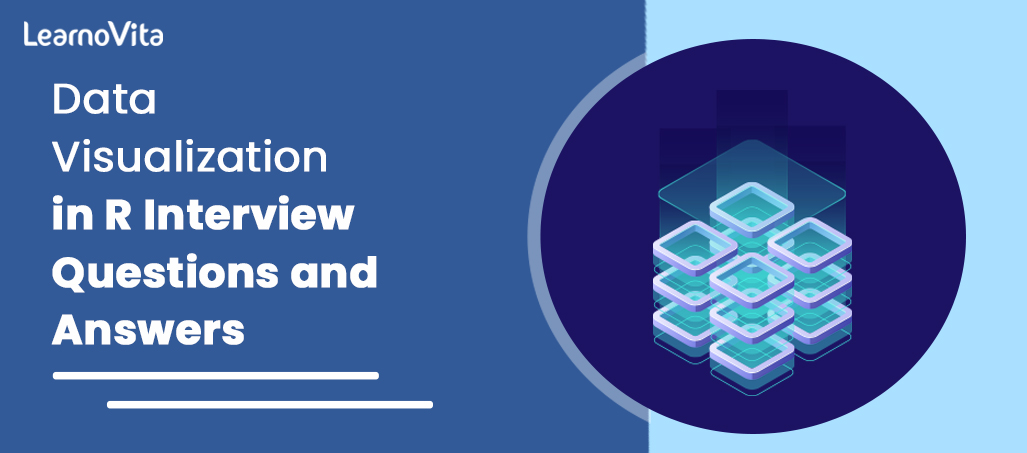
40+ [REAL-TIME] Data Visualization in R Interview Questions and Answers
Last updated on 26th Sep 2022, Blog, Interview Question
1.Compare R & Python.
Ans:
| R | Python |
|---|---|
| R artificial language. | Python artificial language. |
| Model Building is analogous to Python. | Model Building is analogous to R. |
| Model Interpretability is nice. | Model Interpretability isn’t smart. |
| Production isn’t higher than Python. | Production is nice. |
| R has smart community support over Python. | Community Support isn’t higher than R. |
| Data Science Libraries are the same as Python. | Knowledge Science Libraries are the same as R. |
| R has smart knowledge visualizations, libraries and tools. | The knowledge image isn’t higher than R. |
| R encompasses a steep learning curve. | Learning Curve in Python is simpler than learning R. |
2.Explain the info import in R language.
Ans:
R provides to import knowledge in the R language. to start with the R commander interface, the user ought to type the commands within the command Rcmdr into the console. knowledge is foreign in R language in three ways in which such as:
- Select the info set within the panel or enter the name of the info set as needed.
- Data is entered directly by exploiting the editor of R Commander via knowledge->New knowledge Set. This works smart only if the info set isn’t large.
- Data also can be foreign from a URL or from plain document (ASCII), or from any applied math package or from the writing board.
3.Explain a way to communicate the outputs of knowledge analysis exploitation R language.
Ans:
Combining the info, code and analysis leads to one document exploitation knitr for consistent analysis done. Helps to verify the findings, increase them and interact in conversations. consistent analysis makes it simple to redo the experiments by inserting new knowledge values and applying it to totally different numerous issues.
4.What is R?
Ans:
R may be an artificial language that is employed for developing applied math computer code and knowledge analysis. it’s being more and more deployed for machine learning applications also.
5.How R commands are written?
Ans:
By exploitation # at the beginning of the road of code like #division commands are written.
6.What are t-tests() in R?
Ans:
It is accustomed to verify that the means that 2 teams are equal or not by exploitation t.test() operate.
7.What are the disadvantages of R Programming?
Ans:
The disadvantages are:
- Lack of normal interface.
- Not smart for giant knowledge.
- Does not offer a program to read knowledge.
8.What is the employment of With () and By () operating in R?
Ans:
With() operate applies associate degree expression to a dataset.
- #with(data,expression)
By() operate applies to every level of a factor.
- #by(data,factor list,function)
9.In R programming, however, missing values are represented?
Ans:
In R missing values are delineated by metallic elements that ought to be in capital letters.
10.What is the employment of subset() and sample() operating in R?
Ans:
Subset() is employed to pick the variables and observations and sample() operate is employed to come up with a random sample of the scale n from a dataset.
11.Explain what’s transposed.
Ans:
Transpose is employed for reshaping of the info that is employed for analysis. Transpose is performed by t() operate.
12.What are the benefits of R?
Ans:
The advantages are:
- It is used for managing and manipulating knowledge.
- No license restrictions.
- Free and open supply computer code.
- Graphical capabilities of R are smart.
- Runs on several software packages and totally different hardware and conjointly runs on thirty two & sixty four bit processors etc.
13.What is the operation used for adding datasets in R?
Ans:
For adding 2 datasets rbind() operate is employed however the column of 2 datasets should be the same.
- Syntax: rbind(x1,x2……) wherever x1,x2:
14.How you’ll manufacture co-relations and covariances?
Ans:
Cor-relations are created by cor() and covariances are created by cov() operate.
15.What is the distinction between matrix and dataframes?
Ans:
Dataframe will contain a totally different variety of knowledge however the matrix will contain a solely similar variety of knowledge.
16.What is the distinction between l apply and s apply?
Ans:
L apply is employed to indicate the output within the variety of list whereas s apply is employed to indicate the output within the variety of vector or knowledge frame.
17.What is the distinction between seq(4) and seq_along(4)?
Ans:
Seq(4) means that vector from one to four (c(1,2,3,4)) whereas seq_along(4) means that a vector of length(4) or 1(c(1)).
18.Explain however you’ll begin the R commander interface.
Ans:
Rc m dr command is employed to begin the R commander interface.
19.What is the memory limit of R?
Ans:
In thirty two bit system memory limit is 3Gb however most versions restricted to 2Gb and in sixty four bit system memory limit is 8Tb.
20.How many knowledge structures R has?
Ans:
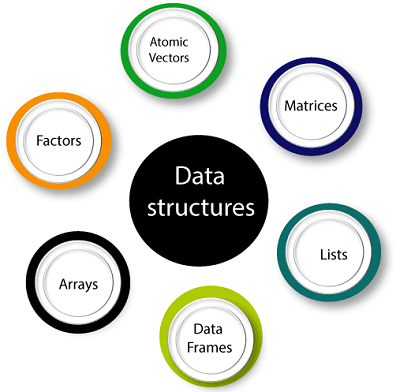
21.Explain however knowledge is aggregate in R.
Ans:
There are 2 ways that collapsing knowledge by exploiting one or a lot of BY variables and alternative is aggregate() operate within which BY variable ought to be in the list.
22.How many sorting algorithms are available?
Ans:
There are five varieties of sorting algorithms are used that are:
- Bubble kind.
- Selection kind.
- Merge Sort.
- Quick Sort.
- Bucket kind.
23.How to produce new variables in R programming?
Ans:
For making new variable assignment operator.
24.What is the performance that is employed for merging information frames horizontally in R?
Merge()function is employed to merge 2 knowledge frames
Eg. Sumload(”z.Rdata”)
25.What is the employment of coin packages in R?
Ans:
Coin package is employed to realize the reorganization or permutation primarily based on applied math tests.
26.Which perform is employed for sorting in R?
Ans:
order() perform is employed to perform the sorting.
27.What is the employment of t apply?
Ans:
IOS-6.1.3
28.What happens once the applying object doesn’t handle AN event?
Ans:
The events are sent to your delegate for process.
29.What are the characteristics of an effective data visualisation?
Ans:
Every interview for a position in data visualisation will present you with a variant of this question. The purpose of this inquiry is to get a fundamental comprehension of your design philosophy as well as an awareness of your capacity to create for a particular audience. You might discuss certain aspects such as the following:
- Aesthetics and the philosophy of colour.
- Adapting the visualisation to the data and the purpose of the analysis.
- Cost of development and ease of deployment in new environments.
- One essential element to emphasise is that you should always direct your reaction toward the audience. Data is made more understandable and accessible to the public by well visualised data.
30.Suspected or missing data: what to do?
Ans:
Walk the interview through data validation. Data validation reports explain why data failed. Next, outline how you would analyse this data and how you would handle missing data using deletion, single imputation, mean/median/mode imputation, etc.
31.Explain app specific objects that store the app contents.
Ans:
The app specific objects square measure knowledge model objects that store the app’s contents.
32.Explain the aim of exploitation UIWindow object?
Ans:
UIWindow object coordinates the one or additional views presenting on the screen.
33.Tell Maine the super category of all read controller objects
Ans:
UIViewController category.
34.How to produce axes within the graph?
Ans:
Using axes() perform custom axes square measure created.
35.What is the employment of abline() function?
Ans:
abline() performs is to add the reference line to a graph.
- Syntax: abline(h=yvalues, v=xvalues)
36.Why vcd package is used?
Ans:
The vcd package provides completely different ways for visualizing variable categorical knowledge.
37.What is GGobi?
Ans:
GGobi is AN open computer program for visualization for exploring high dimensional typewritten knowledge.
38.What are iPlots?
Ans:
It is a package which offers bar plots, mosaic plots, box plots, parallel plots, scatter plots and histograms.
39.What is the employment of lattice packages?
Ans:
The lattice package is to enhance aboard R graphics by giving higher defaults and it has the flexibility to simply show variable relationships.
40.What is the fitdistr() function?
Ans:
It is wont to give the most chance fitting of univariate distributions. it’s outlined beneath the MASS package.
41.Which knowledge structures square measure wont to perform applied math analysis and make graphs?
Ans:
Data structures square measure vectors, arrays, knowledge frames and matrices.
42.What is the use of sink() function?
Ans:
It defines the direction of output.
43.Why library() perform is used?
Ans:
This performance is employed to indicate the packages that square measure put in.
44.Why search() perform is used?
Ans:
By this performance we tend to see that that packages square measure presently loaded.
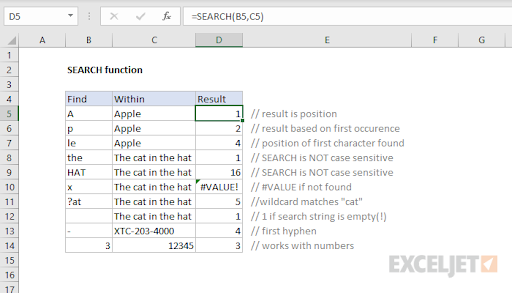
45.On which sort of information binary operators square measure worked?
Ans:
Binary operators square measure worked on matrices, vectors and scalars.
46.Which perform is employed to form a frequency table?
Ans:
Frequency table is made by table() perform.
47.Define loglm() perform.
Ans:
Loglm() perform is employed to form log-linear models.
48.What is the employment of the corrgram() function?
Ans:
corrgram() perform is employed to plot correlograms.
49.How to produce scatterplot matrices?
Ans:
Pair() or splom() perform is employed to produce scatterplot matrices.
50.What is np mc?
Ans:
It is a package which supplies statistical multiple comparisons.
51.What is the employment of diagnostic plots?
Ans:
It is wont to check the normality, heteroscedasticity and prestigious observations.
52.Define anova() perform.
Ans:
anova() is employed to check the nested models.
53.What is cv.lm() function?
Ans:
It is outlined beneath the DAAG package that is employed for k-fold validation.
54.Define stepAIC() perform.
Ans:
It is outlined beneath the MASS package that performs stepwise model choice beneath precise AIC.
55.Define leaps().
Ans:
It is wont to perform the all-subsets regression and it’s outlined beneath the leaps package.
56.Define relaim po package.
Ans:
It is wont to live the relative importance of every predictor within the model.
57.Why is an automobile package used?
Ans:
It gives a spread of regression as well as scatter plots, variable plots and its additionally increased diagnostic.
58.Define a strong package.
Ans:
It provides a library of strong ways as well as regression.
59.What is robustbase?
Ans:
It is a package that provides basic strong statistics as well as model choice ways.
60.Define plotmeans().
Ans:
It is outlined beneath the g plots package which incorporates confidence intervals and it produces a mean plot for single factors.
61.What is the complete variety of MANOVA?
Ans:
MANOVA stands for statistical procedure of variance.
62.What is the employment of MANOVA?
Ans:
By exploiting MANOVA we are able to check quite one variable at the same time.
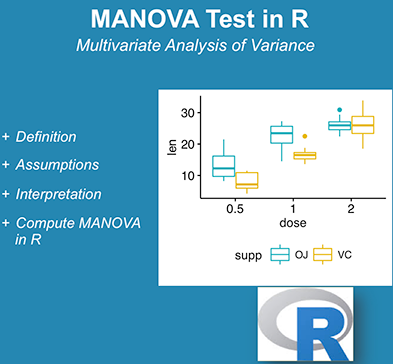
63.Define mshapiro.test( ).
Ans:
It is a performance that is defined in the mv normtest package. It produces the Shapiro-wilk take a look at for variable normality.
64.Define bartlett.test().
Ans:
Bartlett.test() is employed to produce a constant k-sample. Take a look at the equality of variances.
65.What is fligner.test()?
Ans:
It is a performance that provides a non-parametric k sample to take a look at the equality of variances.
66.Define hov plot().
Ans:
It is outlined in the HH package that provides a graphic take a look at the homogeneity of variance supported brown forsyth.
67.Which variables are pictured by minuscule letters?
Ans:
Numerical variables are pictured by minuscule letters.
68.Which variables are pictured by upper-case letters?
Ans:
Categorical factors are pictured by upper-case letter letters.Learn additional concerning R during this perceptive article on R programming.
69.What is supplying regression?
Ans:
Logistic regression is employed to predict the binary outcome from the given set of continuous predictor variables.
70.Define Poisson regression.
Ans:
It is accustomed to predict the result variable that represents counts from the given set of continuous variables.
71.Define Survival analysis.
Ans:
It includes a variety of techniques that are employed for modeling the time to an occasion.
72.What is the employment survfit() function?
Ans:
It estimates a survival distribution of one or additional teams.
73.Define survdiff().
Ans:
It determines the variations in survival distribution between 2 or additional teams.
74.What is coxph()?
Ans:
It is a performance that is employed to model the hazard performed on the set of variables.
75.In which package survival analysis is defined?
Ans:
Survival analysis is outlined beneath the survival package.
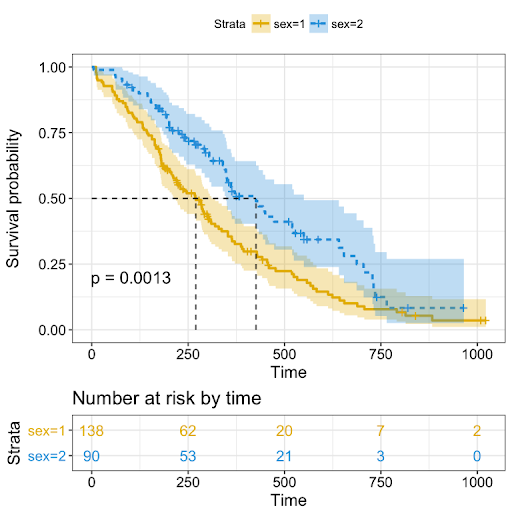
76.What is the employment of the MASS package?
Ans:
MASS embodies those functions that perform linear and quadratic discriminant function analysis.
77.Define qda().
Ans:
qda() prints a quadratic discriminant perform.
78.Define lda().
Ans:
lda() is employed to print the discriminant functions that are predicated on targeted variables.
79.What is the employment of the forecast package?
Ans:
It provides the functions that are used for automatic choice of ARIMA and exponential models.
80.Define motor vehicle.arima().
Ans:
It is accustomed to handle the seasonal further as non-seasonal ARIMA models.
81.What is the principal() function?
Ans:
It is outlined in the psych package that is employed to rotate and extract the principal elements.
82.What is FactoMineR?
Ans:
It is a package which has quantitative and qualitative variables. It conjointly includes supplementary variables and observations.
83.What is the complete style of CFA?
Ans:
CFA stands for corroborative correlational analysis.
84.What is the employment of the boot.sem() function?
Ans:
It is accustomed to bootstrap the structural equation model.
85.What is the complete style of SEM?
Ans:
SEM stands for Structural Equation Modeling.
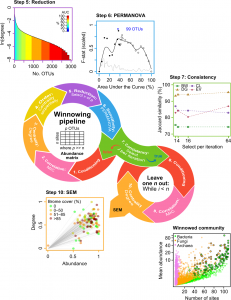
86.Which performs classical flat scaling?
Ans:
cmdscale() perform is employed to perform classical flat scaling.
87.Define isoMDS().
Ans:
This performance is outlined beneath the MASS package that performs non metric flat scaling.
88.Which perform individual distinction scaling?
Ans:
It is done by indscal() perform.
89.What does pvclust() perform ?
Ans:
It comes beneath the pvclust package that provides p-values for gradable agglomeration.
90.Define cluster.stats() ?
Ans:
It is outlined in the fpc package which gives a way for comparing the similarity of 2 clusters resolution mistreatment to totally different validation criteria.
91.What do we tend to use for a party package?
Ans:
It is accustomed to offer a non-parametric regression for ordinal, nominal, expurgated and variable responses.
92.Which package offers the bootstrapping?
Ans:
Boot package is employed which gives bootstrapping.
Are you looking training with Right Jobs?
Contact Us- Hadoop Interview Questions and Answers
- Apache Spark Tutorial
- Hadoop Mapreduce tutorial
- Apache Storm Tutorial
- Apache Spark & Scala Tutorial
Related Articles
Popular Courses
- Hadoop Developer Training
11025 Learners - Apache Spark With Scala Training
12022 Learners - Apache Storm Training
11141 Learners
- What is Dimension Reduction? | Know the techniques
- Difference between Data Lake vs Data Warehouse: A Complete Guide For Beginners with Best Practices
- What is Dimension Reduction? | Know the techniques
- What does the Yield keyword do and How to use Yield in python ? [ OverView ]
- Agile Sprint Planning | Everything You Need to Know
